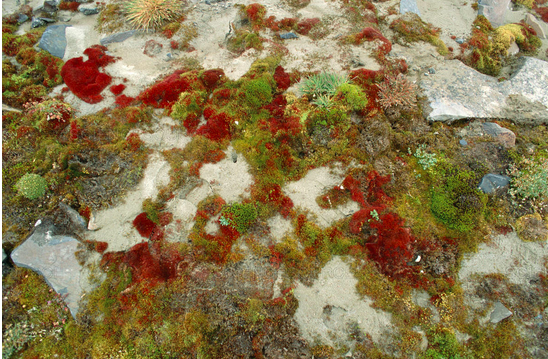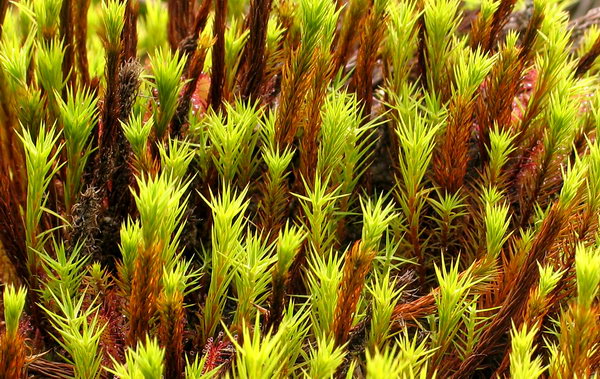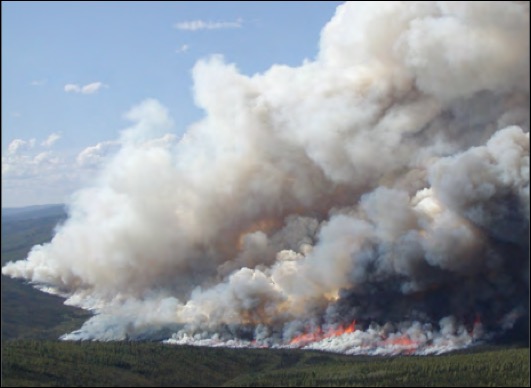
Welcome to my dive into #MarvelousMoss. Most of what we know about plants centers on vascular plants. But there is this incredibly rich & interesting lineage(s) of nonvascular plants or bryophytes. These plants are other-worldly, create habitat & be habitat, & defy physics! 1/ 

Bryophytes=liverworts, hornworts, mosses are often referred to as cryptogams (meaning hidden reproduction). But I think about cryptic diversity. Most of the plant diversity in northern ecosystems is on the ground, difficult to ID, but provides loads of important functions. 2/ 

Time for a deep time dive! Mosses are the closest relatives to the first land plants. The first bryophytes emerged in the Cambrian (aka Cambrian explosion of diversification) while the living clade of vascular plants emerged later in the Ordovician. 3/ pnas.org/content/115/10…
Here's where things get wild. Did mosses trigger an ice age? Soon after the explosion of diversification, atmos CO2 fell, ice sheets spread w/ a mass extinction. Early mosses likely transformed the biosphere through bedrock weather -> CO2 sequestration. 4/ nature.com/articles/ngeo1…
Mosses reproduce by spores. The sporophyte is the stalk protruding from the main plant & contains spores, which can travel >12,000 km by wind! My kids are frequently horrified when I get down on the ground with my camera and yell 'Look kids, moss sex!’ Yes I am that parent. 5/ 

What do moss & jellyfish movement have in common? Vortex rings! Sphagnum release spores explosively not via ballistic trajectories but rather via turbulent ‘vortex rings’. As a result, spores are ejected at 32,000 times the force of gravity! Wowza!! 6/ blogs.nature.com/news/2010/07/m… 

I have deep ♥️ for Sphagnum moss. They have a fascinating trait called hyaline cells. During its development, the moss resorbs material from half its photosynthetic cells, creating a network of living & dead cells. Hyaline cells often have pores & make Sphagnum a super sponge! 7/ 

Personal side note. As a first year graduate student, my advisor (Dale Vitt, @UofAResearch) wanted me to explore the carbon cycling of hyaline cell resorption. I went down that path for awhile but couldn't figure out how to study it. That's OK! I have been fascinated ever since.
2nd side note. BellaAura is marketing Sphagnum-products as a skin moisturizer. I tend to find sticking my hands into Sphagnum and peat does the opposite, but perhaps that is me. Unfortunately this image is not Sphagnum! It is very pretty though so I give the company some credit. 

Sphagnum are known as habitat manipulators because some species build hummocks or mounds, thereby creating their own niche. But hyaline cells also serve as habitat! This paper is a start at understanding the Sphagnum microbiome (nph.onlinelibrary.wiley.com/doi/pdf/10.111…). 8/ 

Nonvascular mosses lack xylem or phloem, but Polytrichum mosses have efficient internal water conduction closely paralleling that in vascular plants. Is this an evolutionary innovation that allowed life to get taller and more terrestrial? nature.com/articles/s4147… 9/ 

Plant stomata help exchange essential gases & facilitate photosynthesis. But this research by @AmeliaMerced shows that stomata appeared & disappeared as mosses evolved. Moss stomata are expendable, demonstrating that mosses march to their own beat. 10/ frontiersin.org/articles/10.33…
My friend Jon Shaw (@DukeU) often says w/ Sphagnum we have to choose between the improbable & the impossible. Unlike the "out of the tropics" hypothesis explaining species diversification, most Sphagnum species actually diversified in northern regions. 11/ theconversation.com/out-of-the-tro…
Sphagnum spread clonally, & Shaw's team has found that a single clone (one individual) can dominate the surface of an entire peatland. In fact, they collected a single clone across a huge area of U.S. eastern peatlands. It's a Sphagnum super clone! Mind boggling. 12/ 

We all deal with stress differently...Mosses tolerate drought stress by shutting down metabolism- they can recover later. Mosses have been revived after 1000s of yrs & can even regenerate again after being buried for 100s of yrs. Cool story by @NatGeo 13/ nationalgeographic.com/news/2013/5/13…
Human relationships w/ moss: In Indigenous cultures, moss helped swaddle babies, line animal skins/sacks, & as diapers. Even in WWI, moss was used as bandages due to antiseptic properties. We use it in gardens & to treat oil spills. Next time you can, please thank a moss. 13/
Moss is appreciated in Japan. Moss gardens celebrate the wild & sensual, the mysterious & quirky. It feels both fresh & ancient. “Like an undisturbed treasure from another era, the moss seemed to be everywhere at once....wrapping the forest in its luminous green fur” -Fujii 14/ 

Thank you for joining my #MagnificentMoss thread. Moss are often walked past or walked over, unobserved & forgotten. But if you slow down, get low to the ground, & take a closer look to engage with the moss world, I promise you will be rewarded & delighted. 15/15 







@threadreaderapp unroll
• • •
Missing some Tweet in this thread? You can try to
force a refresh







